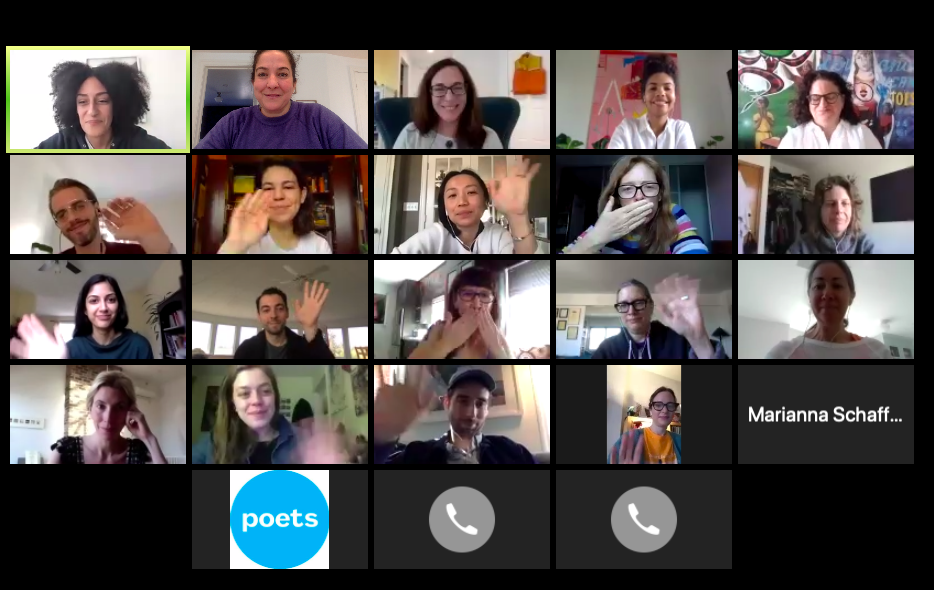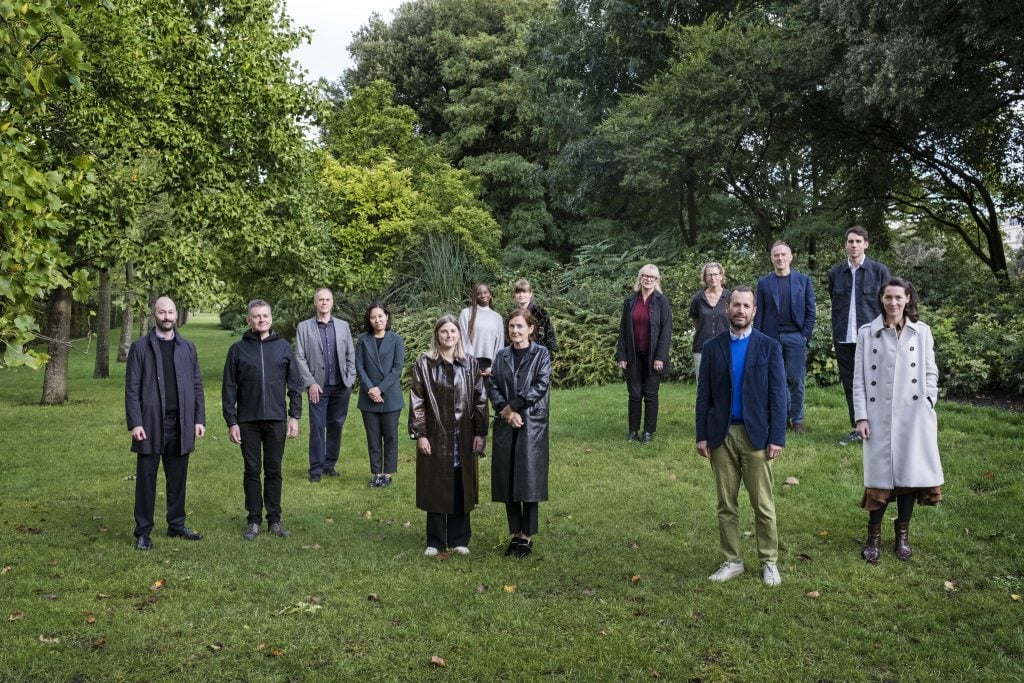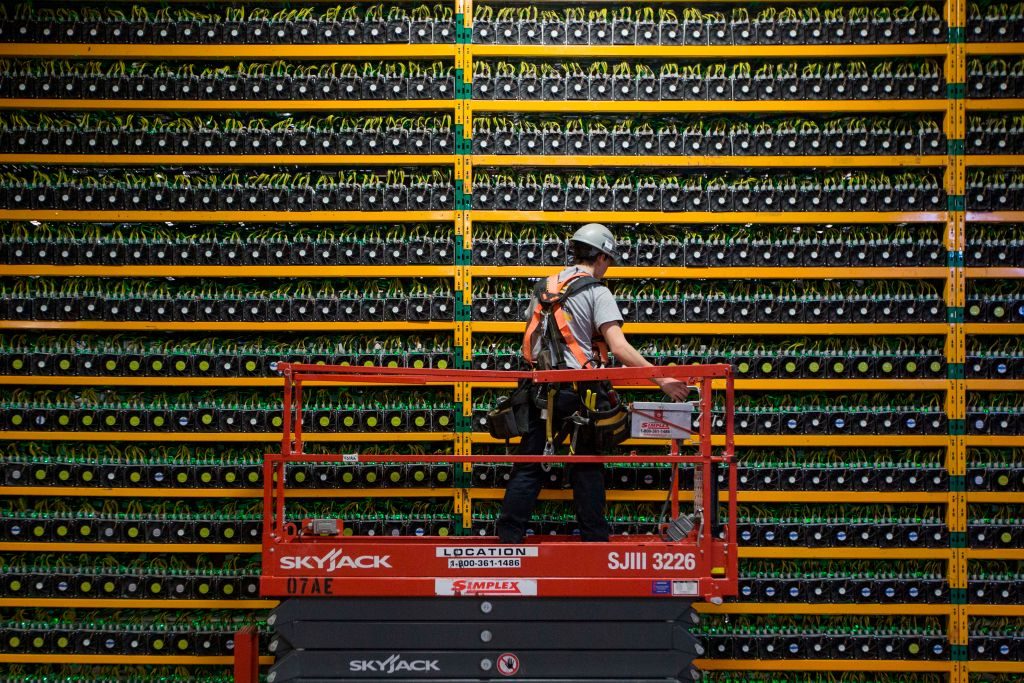It’s no coincidence that in a year when the art world has been forced to adjust to a new pace of life, many art businesses have started thinking seriously about sustainability. The growth of interest in the Gallery Climate Coalition and other sustainability-focused organizations reflects a growing unease that existing models of art production, exhibition, and sales can have significant downsides from a sustainability point of view. Needless to say, where it has been feasible to bring the process of showing and selling art online, galleries have been keen to experiment.
But all this online activity begs a new question: Does the art world have a digital carbon footprint problem? News articles sometimes paint an alarming picture of our digital energy consumption, but for most art businesses, it will be flights and shipping that cause the biggest problems. However, some aspects of our collective digital usage—such as device addiction, voracious streaming of digital video services, and Bitcoin production—can have negative environmental consequences, so it’s worth addressing some of the myths and misconceptions.
Here are five ways art businesses’ digital activities are (and aren’t) generating a carbon footprint, and what questions you should be asking about reducing emissions.
How Much Energy Does It Take to Run My Website?

Art Basel’s March 2020 Online Viewing Room, featuring a work from exhibitor Fergus McCaffrey’s exhibition “Japan Is America.” Courtesy of Art Basel.
Contrary to some claims, the amount of energy used to serve web pages is actually tiny. Efficient web servers are capable of delivering hundreds of pages per second and the total energy consumption of a server will have a finite maximum not dissimilar to a fancy laptop. Compared with the energy consumption of all the other computers your business uses, the website should not be a major concern.
Furthermore, considering what an important shop window a website is for an art business (especially if you offer an online viewing room), the energy used to run it will be insignificant in the context of what you expend to operate your brick-and-mortar spaces.
Do Video Calls and Email Cost the Earth?

The funders behind Artist Relief coordinating their $10 million effort over Zoom. Photo: Artist Relief.
Most of us have moved our meetings online in the past year, and there’s no doubt that online video conferencing consumes significant amounts of bandwidth and energy compared with other digital technology. But considering how much energy it might require to get everybody in the same physical room, it could be argued that video conferencing is by far the more energy efficient way of meeting face to face.
If you feel you’d really like to make a difference, try audio apps (or old-fashioned telephone calls) instead of video conferencing when you don’t need to see the person you’re talking to. Video gobbles bandwidth.
When it comes to email, there is a problem with the reliability of research into its carbon footprint, as many published statistics come from a pre-cloud era when email contributed more to carbon emissions because many companies ran their own email servers. The consolidation of resources by cloud platforms has made email technology considerably more efficient but, as one of the forms of communication used most frequently to inform collectors and art lovers about artworks and exhibitions, it still represents a significant volume of data exchanged among and stored on huge numbers of computers. Clients at my company Artlogic, which builds technology to make art businesses more efficient, sent more than 57 million email notifications in the past 12 months alone, and that doesn’t include direct emails sent by gallery employees.
There’s no doubt that the email technology—especially the fact that most emails contain the entire prior exchange—was not designed for data efficiency. So one thing you can do to reduce your carbon impact is to use text-based messaging apps like WhatsApp, Slack, Signal, or Messenger, which are highly efficient in comparison.
Which Blockchain Is the Most Environmentally Friendly?

Photo illustration of digital cryptocurrencies, Dogecoin and Bitcoin. Photo by Yuriko Nakao/Getty Images.
The blockchain is a clever concept that allows you to store transactions in a decentralized, transparent, and tamper-proof way. There are great potential uses of the technology in the art world, such as for securely and reliably storing proofs of transactions ranging from authenticity, to provenance, to condition reports.
Unfortunately, blockchain technology has been problematic from a sustainability and energy-consumption perspective and urgent attempts have been underway to fix it. If you’re interested in choosing a blockchain app, ask the developers which blockchain it uses. Here’s a very basic breakdown, but bear in mind that this is a fast-moving technology which changes very rapidly:
- Bitcoin/Dogecoin—uses older technology (“Proof of Work”) that requires a vast amount of electricity to mine the underlying cryptocurrency and thus to develop the blockchain. This is run by more than one million individuals, oftentimes at the scale of whole data centers built specifically for this purpose, leading to a morally unsupportable outcome whereby Bitcoin mining now uses an estimated 0.1 percent of the entire global electricity supply: a truly terrible carbon footprint. This blockchain uses more electricity than Argentina.
- Ethereum/Neo—uses a hybrid model that is attempting to transition to a more efficient way of working (“Proof of Stake”). Some have already made this transition (Neo), some are working towards this goal (Ethereum). The result is a much reduced carbon footprint compared with Bitcoin. Even so, in 2018, Ethereum used more electric energy than Iceland, so it is still far from environmentally friendly.
- Cardano/Polkadot/Algorand—these blockchains are switching to a new model that allows lots of transactions per second and is vastly more efficient and highly scalable. The electricity costs are comparable to using traditional servers in a centralized application.
Though things are improving, the most well-known blockchain models are the least sustainable, so if you’re in doubt as to whether you need it and are concerned about CO2 emissions, you should try and choose wisely. In some ways, the problem of the blockchain is that it hit the public imagination—and that of app developers and entrepreneurs—long before the technology was fully mature and many of these scalability and energy-consumption problems have yet to be ironed out.
Are NFTs Unsustainable?

Beeple, Everydays – The First 5000 Days NFT, 21,069 pixels x 21,069 pixels (316,939,910 bytes). Image courtesy the artist and Christie’s.
The blockchain also forms a critical backbone of another fast-evolving trend, non-fungible tokens or NFTs, most of which live on the Ethereum blockchain (one of the less environmentally friendly ones). In the form of “crypto collectibles,” NFTs, which are generally traded on specific platforms, can be considered at once a new form of medium or “artwork type,” a rights-management mechanism, and digital assets in and of themselves (though the assets may be stored elsewhere) that revolve around a value model based on verifiable scarcity. NFT offers new and interesting opportunities to artists, especially those who work mainly in the digital space, not least because artist resale rights are baked into the technology.
If you’re wondering if you should get involved, from a sustainability perspective, my answer would be to proceed cautiously: the Guardian estimated that the sale of 303 editions of Earth, an NFT produced by the musician and artist Grimes earlier this month, “used the same electrical power as the average EU resident would in 33 years, and produced 70 tons of CO2 emissions.” It’s interesting that, according to Artnet News, “some of the proceeds from [Grimes’s] NFT sales will go to Carbon180, an NGO dedicated to reducing carbon emissions.”
What Is Something Everyone in My Company Can Do?

The founding members of the Gallery Climate Coalition. Courtesy GCC.
There’s a really useful guide on the Gallery Climate Coalition website offering further steps you can take to cut down your digital carbon footprint. But there are also some basic tips about using energy efficiently, perhaps the most important of which is to turn off your devices (and indeed all electrical appliances) when you don’t need them.
I know this is really hard to do, especially if you charge your phone at night, which is why I have a bunch of these Energy Saving Timer Switch plugs dotted around the house for devices or heaters. You probably only need to charge your phone for a couple of hours, so get one of these and press the button to two hours. If you manage to save five hours a night not wasting electricity on charging a device that is already fully charged, that will add up to 1,825 hours a year of electricity saved on a single device. If the whole art world did this, along with other carbon-conscious choices, imagine the impact we could make.
Peter Chater is Founder and CEO of Artlogic and a founding member of the Gallery Climate Coalition.











